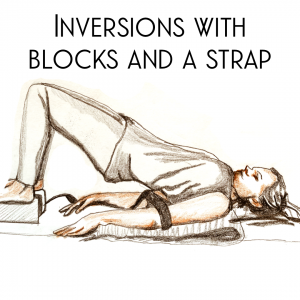As a woman, taking care of your hormonal health is vital for your wellbeing and quality of life. Although hormone fluctuations occur naturally throughout our lives – for example in puberty, pregnancy, menopause, and perimenopause – it’s important to restore the balance of our natural hormones to support our mental and physical health. One way to restore this balance is through regular yoga practice.
How hormonal imbalances impact wellbeing
Hormonal health is one of the key drivers of wellbeing, and imbalanced hormones can negatively impact our health in many ways.
The body’s endocrine (hormonal) system regulates many core bodily functions including sleep, appetite, fertility, libido, and immunity, among others. This makes our hormones directly and indirectly responsible for our physical and mental health and wellbeing.
When our hormones are out of balance, it’s not uncommon to experience a host of unpleasant symptoms, including weight gain, PMS, aches and pains, fatigue, moodiness, anxiety and depression. These negative symptoms are often exacerbated by feelings of frustration and isolation due to a lack of understanding from others.
That’s why it’s important to maintain a healthy endocrine system throughout all stages of life, so that we can feel happy and healthy.

What causes hormonal imbalances in women?
Hormonal imbalances can be caused by natural fluctuations throughout our lives, by health conditions like PCOS, or by lifestyle factors, such as a poor diet or high stress levels.
For women, some gender-specific hormonal imbalances can be triggered by pregnancy, perimenopause, and menopause, where our bodies undergo a natural shift in hormone levels. During these times, it may be particularly challenging to maintain healthy hormones, but we have found – and research has shown – yoga to be a useful tool for restoring balance.
Let’s take a quick look at some of the big hormonal shifts women may experience in life, and how yoga can support the balance of your hormones.
Pregnancy
In pregnancy, women experience a rapid increase in oestrogen and progesterone, and several other hormones are dramatically thrown off balance. These hormonal shifts are necessary to support the developing baby, but they can also have various side effects for the mother.
For example, the sudden increase in oestrogen in the first trimester can cause pregnancy nausea (morning sickness), while the increase in progesterone loosens the joints and ligaments throughout the body. Other hormonal changes can impact a mother’s vision, taste, smell, hair, and nails, and cause pre- and postnatal anxiety or depression.
While these hormonal changes are natural and necessary, they can have a lasting negative impact on a mother’s health and wellbeing.
Therefore, it’s our mission to support mothers by teaching them to access an inner calmness and acceptance through regular and safe yoga practice.
Yoga is a great form of low impact exercise that lowers your blood pressure, stabilises your joints and moods, and helps restore your energy for yourself and your growing baby. Making time for yourself physically and mentally can help you navigate through the (hormonal) ups and downs of pregnancy and – ultimately – help you find balance again.
Because your ligaments have already started loosening to make space for your growing baby, our experienced instructors guide you in gently moving your body into greater length without going into maximum stretch positions.
Post Natal
Albany yoga room look after our mums through to post natal care and it’s always a delight to support women with new babies.

Perimenopause
Perimenopause is the transition period between a woman’s regular cycle and the onset of menopause. In this time, women begin to experience physical changes, often starting years before their final monthly cycle. These changes are caused by a drop in the oestrogen hormone, and can include unpleasant symptoms like hot flushes, night sweats, and vaginal atrophy.
In this stage of life, we encourage you to change your perspective, as your previous diet and exercise routine may not be as effective anymore. While working off extra weight with strenuous exercise might have worked in the past, this approach will drain you when you’re pushing through the symptoms of perimenopause. That’s because during this time, your adrenals are working to produce some of the hormones and, if drained from overuse, are not able to support you. This results in a worsening of symptoms.
In this first stage of menopause, we encourage you to embrace a time of new wisdom and use yoga to help you build strength and compassion through breath work, gentle movement, and relaxation and meditation. Even an hour of yoga can create a calm and happy disposition, release endorphins, and promote deep relaxation to help stabilise your sleeping patterns.

Menopause
Menopause sets in after perimenopause and is caused by a further drop in oestrogen and progesterone levels. Many women struggle to adjust to this drop in hormone levels, which can affect our weight, skin, libido, and sleep.
This is often amplified by a rise in cortisol, which causes our stress levels to spike and further disrupts our body’s natural equilibrium. That’s why reducing stress can be key to helping women gain more balance during this time.
By minimising the spikes that cause mood and energy level changes, yoga can be a good way to keep your stress levels in check, thus improving your physical health and mental wellbeing.
At AYR, we practice guided meditation in restorative and a gentle yoga sessions, which allows you to listen to your body’s needs and helps you restore a healthy hormonal balance.
We use several specific poses and props that are beneficial for women going through hormonal changes, such as:
- The reclining hero pose to open the body
- Bound angle pose to soften, bring awareness to, and enhance our sensitivity to parts of the body that need our attention
- Stitali breath and cooling poses such as forward folds to cool the body
- Ropes and blocks to sustain our poses and help us gain more quality within them
- Adding backbends when fatigued to open the body
- The downward dog pose, creating just enough effort to accelerate blood flow through the head and spine.
Many people who are already experiencing stress in their lives prefer Gentle yoga classes. In this approach, classical asana (poses) create less strain for the adrenals. Anxiety and social pressures can be balanced with different forms of deep relaxation, and restorative yoga can help soothe the nerves.
In this type of yoga, we use defined breathing practices to help calm the nervous system and introduce poses with props that help energise a sluggish body and mind. This includes opening the body with supported backbends, as it is difficult to feel down or disenchanted when the heart and chest face up to the sky.

How yoga practice can help you restore hormonal balance
By improving your sleep
The quality and quantity of sleep you get every night play a crucial role in your hormonal health. Both directly – through impacts on the pituitary gland – and indirectly by impacting your stress levels.
The pituitary gland – which controls the secretion of your body’s hormones – is strongly influenced by your sleeping habits[1], which is why poor sleep can lead to or exacerbate hormonal imbalances.
Yoga Nidra – also known as yogic sleep – is a practice of deep relaxation that puts your body in a sleep-like state and gives you the same restorative benefits of sleep. Incorporating yoga Nidra into your bedtime routine will help you fall asleep faster and stay asleep for longer[1] by helping you calm your thoughts and behaviours.
Yoga Nidra is a sequence of concentrated stillness as the mind is taken from one location to another. During a Yoga Nidra session, you will welcome every part of the body and then go deeper into a mediative conscious state. Through deep listening, you might release or, and build a stronger connection to listening deeper to yourself.
This guided relaxation can lead us to a state of freedom and deep rest. The practice is sometimes even described as a sleepless sleep, as it can give as much rejuvenation without needing to go back to bed. In some cases, students do fall asleep, but that’s totally fine as we will bring you around when needed with a soft bell sound from a singing bowl.
1] https://www.medscape.org/viewarticle/502825 (source)
By lowering stress levels
Stress is a major cause of hormonal imbalance, as it causes our body to release large amounts of cortisol (commonly known as the stress hormone). High levels of cortisol can have severe negative impacts on our health and wellbeing, with symptoms ranging from a change in libido and/or menstrual cycle, to weight fluctuations, and feelings of anxiety and depression[2].
Yoga and meditation are great practices that have been proven to combat stress and anxiety.
For example, studies have shown an increase in growth hormone and delayed ageing in those who listen to their bodies’ needs and learn to use the methods of yoga to boost their moods. It has also been proven that Kriya, poses, pranayama (breathwork) and meditation promote healthy ageing and increase basal levels of GH and DHEAS (growth hormone and recreation of decline with advancing age).
Taking regular and intentional times of stillness can slow down and end chronic stress that depletes the adrenal glands.
Our adrenal glands are also working to keep our body going and so a form of exercise such as yoga puts less strain on the body and still encourages a healthy exercise routine.
Release or replace your energy stores and build a stronger connection to listening deeper to yourself to find out what else is needed.
[1] https://www.ncbi.nlm.nih.gov/pmc/articles/PMC6134749/ (source)
[2] https://www.dailywellness.com/2019/08/08/stress-impacts-hormone-balance-younger-women/
By practicing specific poses that calm the nervous system and address imbalances
At AYR, we use several specific techniques and poses that support your nervous system and promote hormonal balance. This includes:
- Poses that calm the nervous system
- Poses of yoga to stimulate the ovaries
- Stimulating organs to find better homeostasis pressurising and depressurising glands
- Poses for each of the main endocrine centres; e.g. thyroid (bridge pose; plough pose, fish pose, rabbit pose, camel pose
- Focus on the thyroid gland with plough pose, bridge pose fish pose and ujjayi breathing
- Endocrine system stimulated by poses such as camel pose and shoulder stand.
- Using techniques and valuing ourselves more using Pranayama to affect the endocrine system by lengthening breathing

Summary
While hormonal imbalances are a normal part of life, there are many things you can do to control the impact they have on your health and wellbeing. We have seen – and research supports – that yoga is a gentle and effective way to restore hormonal balance and to help you feel your best in all stages of life.
If you’re ready to learn some restorative practices to balance your hormones, get in touch with Fee to book in to one of our classes.






